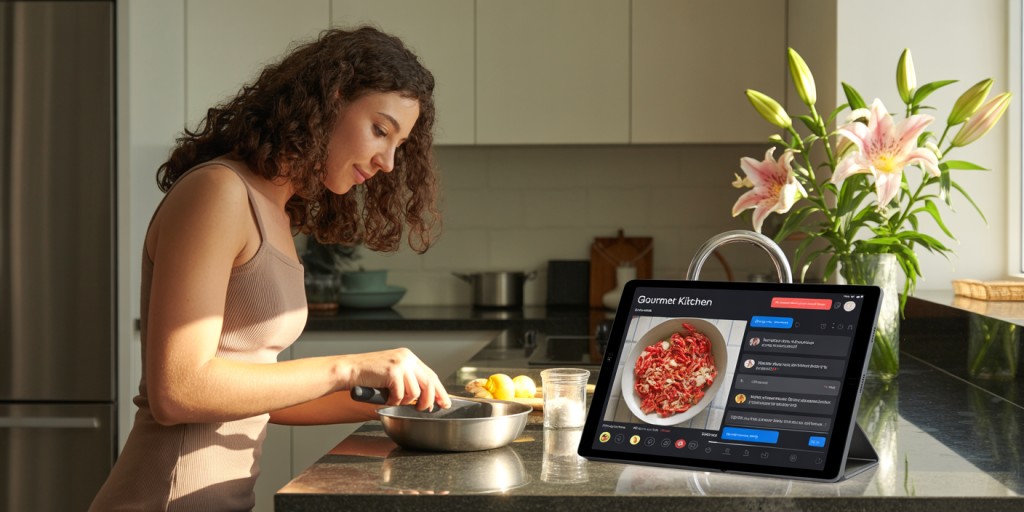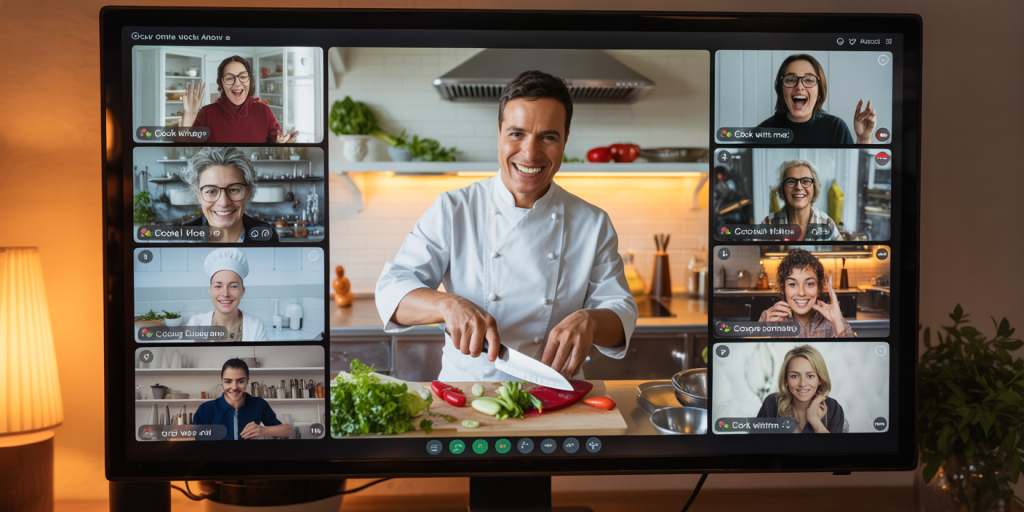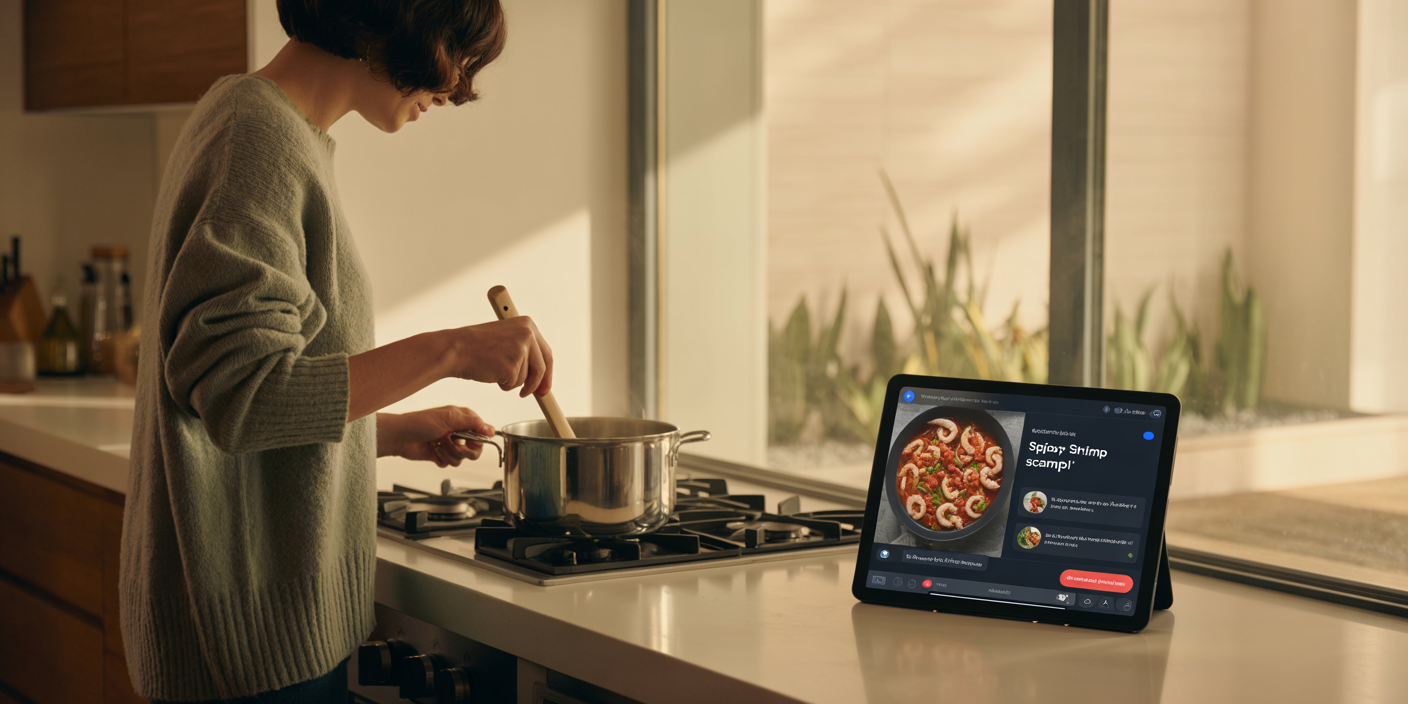Cooking has transformed dramatically over the past decade, with technology playing a pivotal role in how people approach meal preparation. One of the most exciting developments in culinary experiences is the emergence of “Cook With Me” platforms that provide real-time recipes, guiding users step-by-step as they cook. This interactive style combines live instruction, immediate feedback, and community engagement to revolutionize home cooking. In this article, we explore the growing trend of real-time recipes, how they reshape the cooking landscape, practical examples, and what the future holds for culinary enthusiasts worldwide.
The Rise of Real-Time Recipes: Changing the Culinary Landscape
The concept of real-time cooking instruction is not entirely new, but advances in digital connectivity and smart devices have amplified its accessibility and impact. According to a 2023 study by Statista, over 65% of home cooks in the U.S. use online cooking platforms and apps, with a significant increase noted in those preferring live or real-time content. Platforms like Twitch, YouTube Live, and emerging cooking apps now offer interactive sessions where users can ask questions, adjust ingredients, and receive immediate guidance during meal preparation.
This live approach addresses common challenges such as following ambiguous recipe steps or timing issues, which often lead to suboptimal cooking results. Real-time guidance helps reduce errors, boosting confidence for novices and seasoned cooks alike. In addition, community features, such as live chat and shared cooking experiences, foster a sense of connection that traditional recipe books or recorded videos cannot replicate.
How Real-Time Recipes Work: Technologies and Features
Real-time recipes typically rely on live video feeds combined with interactive chat and instructional overlays. A user starts a session with a chef or cooking instructor who demonstrates the recipe in real-time. Users follow along in their own kitchens, and can ask questions or request clarifications via chat functions.
In recent years, the integration of AI and augmented reality (AR) has enhanced this experience. For instance, some apps employ AI to analyze user input—such as questions about ingredient substitutions or cooking times—and deliver instant, tailored advice. AR-enabled smart glasses or screens project step-by-step instructions directly into the user’s line of vision, minimizing the need to look away from the cooking surface.

A practical example is the app “CookLive” which, since its launch in 2022, has amassed over 1 million users worldwide. By combining live chef sessions with real-time ingredient trackers, CookLive reduces food waste by recommending portion sizes based on user household numbers and dietary preferences. Data from the app’s internal analytics shows users have a 40% higher success rate completing recipes on their first attempt compared to traditional recipe sites.
| Feature | Traditional Recipe Books | Recorded Video Tutorials | Real-Time Interactive Platforms |
|---|---|---|---|
| User Interaction | None | Limited (comments only) | Live chat and Q&A |
| Feedback Timing | None | Delayed | Immediate |
| Adaptability to User | Low | Moderate | High |
| Visual Guidance | Static images | Video | Live video with overlays |
| Personalized Help | No | No | Yes, often AI-assisted |
This table highlights the advantages real-time recipe platforms hold over more traditional cooking resources.

Benefits of Cooking in Real Time: Skill Building and Engagement
The most significant advantage of cooking with live, real-time recipes is the boost in skill development. Unlike pre-recorded videos or static recipes, live sessions offer immediate correction, enabling users to learn techniques properly on the first try. This reduces frustration and accelerates mastery of new skills.
A 2023 survey by the Culinary Institute of America (CIA) revealed that participants who engaged with live cooking demos reported a 60% increase in culinary confidence over those who only used traditional recipe formats. For example, a beginner attempting a complex soufflé might encounter difficulty in timing the folding stage correctly. Real-time feedback allows the instructor to spot mistakes as they happen, providing tips to salvage the dish, thereby improving outcomes and learning retention.
Moreover, the social aspect of real-time cooking should not be underestimated. Platforms often encourage shared experiences where multiple users cook simultaneously, exchanging tips and encouragement. This interactive environment mirrors professional cooking classes but delivers it in the home setting. This community-driven approach helps tackle isolation in cooking, a common barrier to developing kitchen skills, especially for new cooks.
Popular Platforms and Real-Life Success Stories
Among the growing number of platforms supporting real-time cooking, notable examples include “Tasty Live,” “MasterClass Live,” and “Airbnb Online Experiences in Cooking.” Each platform offers unique approaches, from bite-sized recipes designed for busy lifestyles to globally inspired gourmet dishes. For instance, “Tasty Live” emphasizes quick, approachable meals under 30 minutes, attracting an audience seeking practical everyday cooking solutions.
A real-life success story comes from a user named Megan, a working mother of two, who credits live cooking sessions with improving her family’s mealtime nutrition. Prior to joining real-time cooking classes, Megan often relied on pre-packaged meals or simple takeaways. After six months on “Tasty Live,” she not only expanded her recipe repertoire but also involved her children in meal preparation, turning cooking into a shared family activity.
Another compelling case is professional chef Marco Rodriguez, who conducts live workshops through “MasterClass Live.” Marco’s sessions combine technique with real-time user interaction, offering personalized advice based on participants’ questions. According to Marco, the dynamic nature of these sessions increases student engagement and motivates participants to experiment beyond predefined recipes.
| Platform | Target Audience | Key Features | User Base (2024 est.) |
|---|---|---|---|
| Tasty Live | Home cooks, beginners | Quick recipes, live chat | 2 million+ |
| MasterClass Live | Intermediate to advanced | Celebrity chefs, personalized Q&A | 750,000+ |
| CookLive | Health-conscious users | AI integration, portion control | 1 million+ |
| Airbnb Cooking Experiences | Social cooks, travelers | Cultural dishes, community interaction | 500,000+ |
The different platform offerings reflect diverse user needs, enabling anyone from casual cooks to serious foodies to benefit from real-time recipes.
Challenges and Considerations in Real-Time Cooking
Despite its advantages, real-time recipe platforms encounter several challenges. Connectivity issues, time zone differences, and technology familiarity can limit user access, particularly among older demographics or in rural areas with poor internet infrastructure. The requirement to coordinate schedules for live sessions may also be inconvenient for some.
Additionally, live cooking sessions may increase pressure on users, especially beginners. Unlike recorded videos that can be paused and replayed, live formats demand steady pacing, which may cause stress or discourage participation among those who prefer a more relaxed approach. To mitigate this, some platforms offer hybrid models where recorded versions of sessions remain available for replay.
Furthermore, privacy concerns emerge as users often share video or audio during live classes. Ensuring secure environments through encrypted platforms and clear user guidelines is critical to safeguarding participants’ data and comfort.
On the business side, producing high-quality live content requires significant investment in technology, instructors, and moderation. Platforms must balance interactive engagement with scalability, often employing AI tools to support human hosts without compromising authenticity.
Future Perspectives: Innovations and Trends in Real-Time Cooking
Looking ahead, the future of real-time recipes appears poised for exciting innovation, driven by emerging technologies and evolving consumer preferences. Artificial intelligence is expected to play a larger role in customizing cooking experiences, with systems capable of dynamically adjusting recipes based on real-time feedback from sensors monitoring cooking temperatures, ingredient availability, or dietary restrictions.
Virtual reality (VR) kitchens offer another frontier, immersing users in simulated cooking environments where they can practice techniques without wasting ingredients. Early adopters such as “VirtualChef” are experimenting with VR modules that blend gamification and real-time coaching, making skill-building engaging and accessible.
Moreover, integration with smart kitchen appliances will deepen. Imagine ovens and stovetops syncing with cooking apps to automatically adjust heat levels or cooking times based on live recipe instructions. Data from these devices can provide instant feedback loops, optimizing outcomes and minimizing errors.
From a social perspective, community-driven content will continue growing, supported by platforms that enable sharing of user-generated live recipes or collaborative cook-alongs on global cuisines. This fosters cultural exchange and inclusion, expanding the diversity of culinary knowledge accessible in real time.
Finally, sustainability concerns will influence the design of real-time cooking solutions. Platforms will increasingly focus on reducing food waste, promoting plant-based alternatives, and optimizing energy efficiency in cooking processes. CookLive’s current AI-driven portion recommendations are a glimpse into how technology can make real-time cooking not only user-friendly but also environmentally conscious.
—
In summary, the evolution of “Cook With Me” real-time recipes is reshaping how people learn, share, and enjoy cooking. By combining live interaction, adaptive technologies, and community support, these platforms empower users to elevate their culinary skills and transform meal preparation into an engaging, educational, and socially rewarding experience. As technology advances and user demand grows, the future of real-time cooking holds promising potential to redefine kitchen culture globally.


Deixe um comentário